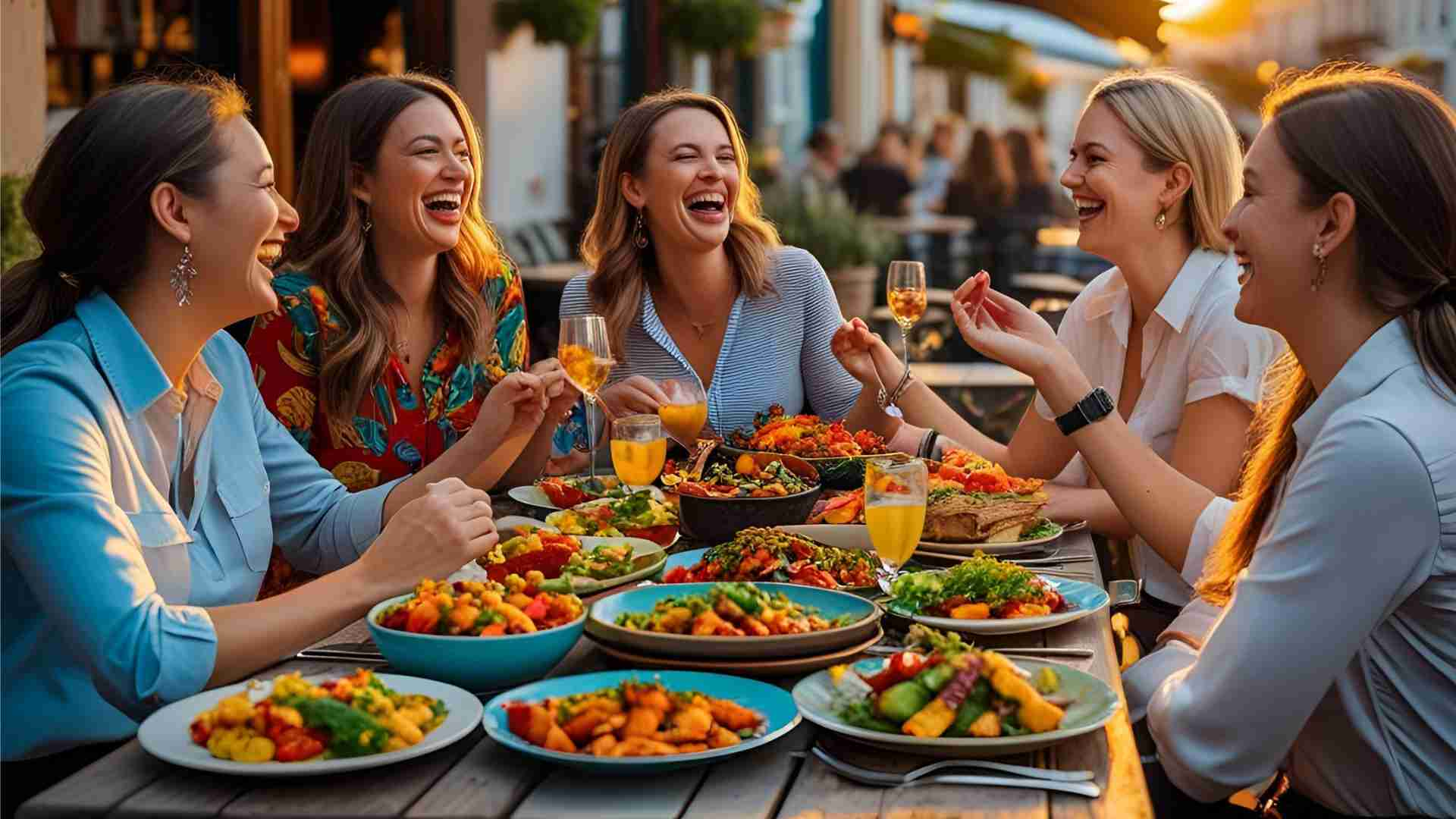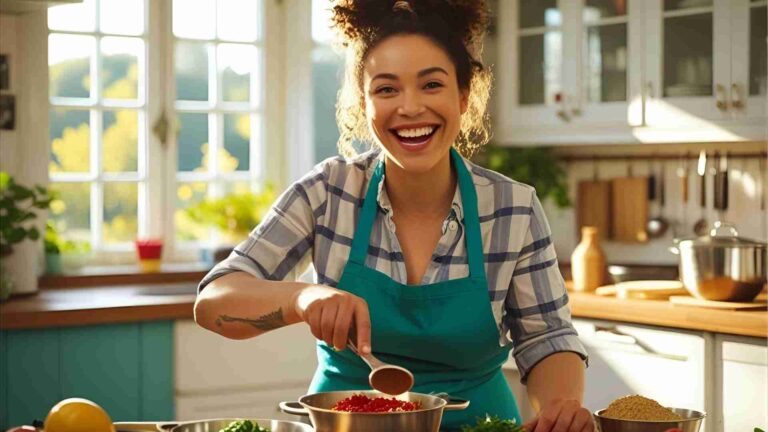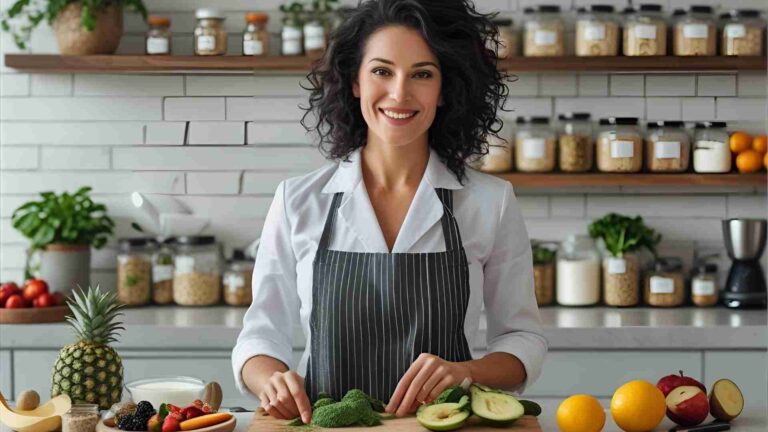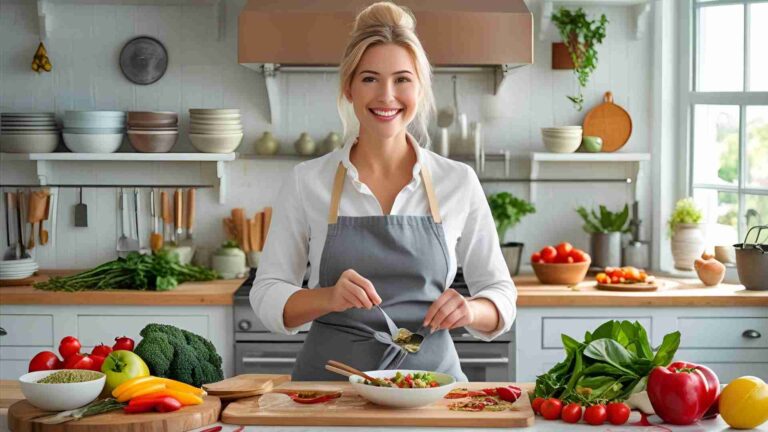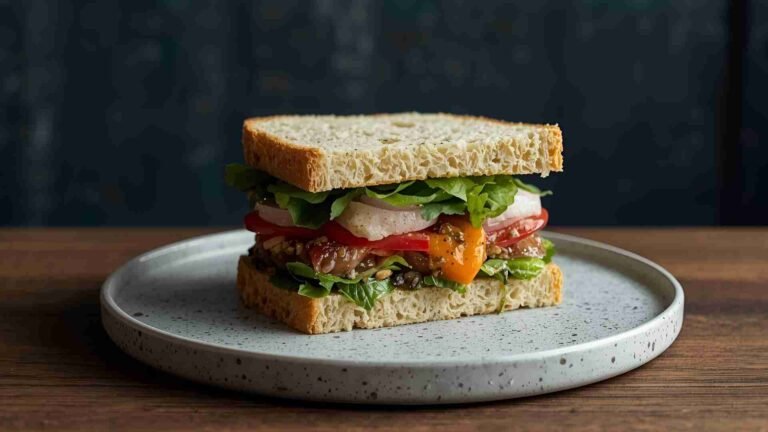5 Ways to Connect with Food Influencers on LinkedIn
Connect with food influencers on LinkedIn using proven strategies: optimize your profile, engage thoughtfully, join groups, and collaborate creatively.
The food and beverage industry thrives on creativity, passion, and connection. In a world where culinary trends evolve rapidly and competition is fierce, building relationships with food influencers can open doors to new opportunities, enhance your industry knowledge, and elevate your brand or career. LinkedIn, with its 61 million influencers and growing professional network, has emerged as a powerful platform for forging these connections. Unlike other social media platforms, LinkedIn’s professional focus and high trust factor make it ideal for targeting food industry experts, from chefs and food photographers to sustainability advocates and restaurant consultants.
This guide explores five actionable strategies to connect with food influencers on LinkedIn: polishing your profile, engaging with content, reaching out directly, joining food-related groups, and collaborating on projects. Each section provides practical steps, insider tips, and real-world insights to help you build meaningful, mutually beneficial relationships. Whether you’re a food photographer, a restaurateur, or an aspiring culinary professional, these strategies will help you navigate LinkedIn’s ecosystem to connect with the right influencers and grow your presence in the food industry.
Why LinkedIn for Food Influencer Networking?
LinkedIn stands out as a networking hub for food professionals due to its unique advantages:
- Targeted Audience: LinkedIn hosts a concentrated group of food industry professionals, including chefs, food stylists, bloggers, and sustainability experts, making it easier to find and connect with relevant influencers.
- High Trust Factor: Unlike platforms driven by casual interactions, LinkedIn emphasizes professional credibility, fostering trust in new connections.
- Industry Expertise: The platform encourages sharing in-depth insights, allowing you to showcase your knowledge and engage with thought leaders.
- B2B Opportunities: LinkedIn is ideal for forging partnerships, securing collaborations, or exploring business opportunities with influencers and brands.
With these benefits in mind, let’s dive into the five strategies to connect with food influencers effectively.
1. Polish Your LinkedIn Profile: Your Digital Menu
Your LinkedIn profile is your first impression in the food industry’s digital dining room. A well-crafted profile acts like a Michelin-starred dish—visually appealing, memorable, and packed with flavor. To attract food influencers, your profile must reflect your expertise, personality, and passion for food. Here’s how to make it irresistible.
Craft a Compelling Headline and Summary
Your headline and summary are the appetizers of your profile—they need to hook influencers and leave them hungry for more. Follow these steps:
- Spice Up Your Headline: Move beyond generic job titles. Instead of “Food Blogger,” try “Food Blogger | Crafting Stories Through Sustainable Cuisine & Vibrant Photography.” Incorporate keywords like “culinary arts,” “food styling,” or “plant-based recipes” to boost discoverability.
- Write a Tasty Summary: The first three lines are critical, as they’re visible before the “See more” click. Start with a hook: “I turn everyday ingredients into unforgettable stories through food photography and sustainable cooking.” Then, outline your experience, unique skills, and what sets you apart in the food industry. For example, a food stylist might highlight their expertise in creating visually stunning plates for top restaurants.
- Incorporate Keywords: Use terms influencers might search for, such as “food sustainability,” “culinary innovation,” or “gastronomy trends.” This improves your profile’s visibility in LinkedIn searches.
- Add Personality: Let your passion shine through. As food photographer Lenka notes, “Food is always on my mind and in my heart.” A touch of authenticity makes your profile relatable and engaging.
Showcase Your Best Work
In the food industry, visuals are everything. Your portfolio is your main course, so plate it up with care:
- Curate High-Quality Visuals: Select images that showcase your skills, whether it’s a perfectly styled dessert or a rustic farm-to-table dish. Prioritize quality over quantity—five stunning shots are better than 20 mediocre ones.
- Organize Your Portfolio: Group your work logically, such as by cuisine (Italian, vegan, fusion) or project type (editorial shoots, restaurant menus). This helps influencers quickly understand your expertise.
- Tell a Story: For each project, include a brief narrative explaining the context and results. For instance, “Shot a vegan dessert series for a local bakery, increasing their Instagram engagement by 30%.” As Laurie Hyllberg from Kinsa Group advises, “Create a mini narrative for each position that explains why you moved into the role and what you achieved.”
- Use Rich Media: Leverage LinkedIn’s media features to upload images, videos, or PDFs of your work. A short video of a cooking demo or a carousel of food photos can make your profile pop.
- Keep It Fresh: Update your portfolio regularly—aim for at least once a year or whenever you complete a significant project. This shows influencers you’re active and evolving.
Example Profile Structure
| Section | Content Example |
|---|---|
| Headline | Food Stylist |
| Summary | Passionate about creating visually stunning plates that tell a story. I specialize in sustainable cuisine and have styled for top-tier restaurants, boosting their social media presence by 25%. Let’s connect to explore the art of food! |
| Featured Work | Vegan Dessert Shoot (Images + Description: “Styled a plant-based dessert menu for XYZ Bakery, resulting in a 30% sales increase.”) |
By crafting a polished, keyword-rich profile with compelling visuals, you’ll attract food influencers and make them eager to connect.
2. Engage with Content: Join the Culinary Conversation
Connecting with food influencers isn’t just about a great profile—it’s about becoming an active part of LinkedIn’s food community. Engaging with content is like seasoning a dish: it requires thought, precision, and a touch of creativity. Here’s how to make your mark.
Comment and Share Thoughtfully
Your comments and shares are opportunities to showcase your expertise and build rapport. Avoid generic responses and focus on adding value:
- Add Substance to Comments: Instead of “Great post!” offer insights that spark discussion. For example, on a post about sustainable cooking, comment: “Your zero-waste tips inspired me to start a ‘leftover makeover’ series in my kitchen, cutting waste by 20%. What’s your favorite way to repurpose ingredients?”
- Ask Thought-Provoking Questions: Questions invite engagement. On a food photography post, try: “I’ve noticed a trend toward ‘messy’ food shots. Do you think this reflects a shift toward authenticity, or is it just a fad?”
- Share with Context: When sharing a post, add your perspective. For instance, sharing a post about restaurant tech: “This aligns with my observations—40% of local restaurants have adopted QR code menus this year. What tech trends are you seeing?”
Post Your Own Content
Creating original content establishes you as a thought leader and attracts influencers to your profile. Here’s how to craft posts that resonate:
- Share Industry Insights: Post about food trends with data to back it up. Example: “According to the National Restaurant Association, plant-based menu items grew 62% this year. Here’s how restaurants can adapt without breaking the bank.”
- Solve Problems: Address common industry challenges. For instance: “Struggling with food costs? I’ve helped clients reduce waste by 25% with these inventory tips…” Include actionable steps to add value.
- Use Polls for Engagement: Polls spark conversation. Victoria Lee, CEO of 100 Pound Social, says, “Asking questions is a brilliant strategy to encourage interaction with your audience.” Try a poll like: “What’s the top food trend for next year? A) Plant-based B) Hyper-local C) Fermentation.”
- Showcase Your Work: Share behind-the-scenes content, like a food styling project: “Here’s how I created this vibrant salad shot using natural light and Canva for layout. What’s your go-to styling tool?”
- Add Fun Elements: Host a contest, such as a “Best Food Pic” challenge, where followers share photos with a hashtag for a chance to be featured in your next post.
Engagement Frequency
| Activity | Recommended Frequency | Purpose |
|---|---|---|
| Commenting | 3–5 times/week | Build visibility and rapport |
| Sharing Posts | 1–2 times/week | Add your perspective to industry discussions |
| Original Posts | 1–2 times/week | Showcase expertise and attract influencers |
| Polls/Contests | 1/month | Boost engagement and community interaction |
By engaging thoughtfully and posting valuable content, you’ll position yourself as a credible voice in the food industry, making influencers more likely to notice and connect with you.
3. Reach Out Directly: Craft Messages That Stand Out
Once your profile is polished and you’re engaging with content, it’s time to reach out to food influencers directly. Personalized, value-driven messages are key to breaking through the noise of their inboxes. Here’s how to do it right.
Write Personalized Messages
Generic messages get ignored. To get responses, tailor your outreach to each influencer:
- Research First: Study the influencer’s profile, recent posts, and niche. If they focus on sustainable cooking, note specific posts or projects you admire.
- Craft a Compelling Subject Line: For InMail, make it specific and engaging. Example: “Inspired by Your Fermentation Tips—Let’s Connect!”
- Start with a Personal Touch: Reference their work: “Hi Sarah, your post on zero-waste recipes was eye-opening. Your kimchi technique inspired my latest batch!”
- Be Clear and Concise: Explain why you’re reaching out: “I’m launching a line of eco-friendly kitchen tools and would love to get your input on sustainable cooking trends.” Keep it to 3–4 short paragraphs.
- End with a Call-to-Action: Make responding easy: “Would you be free for a 15-minute chat next week to discuss potential collaborations?”
Offer Value First
Building goodwill increases response rates. Offer something valuable before asking for anything:
- Share Insights: Provide industry data or trends: “I saw you’re exploring plant-based recipes. I recently conducted a survey on vegan dining trends—would you like a sneak peek at the results?”
- Solve a Problem: Address a challenge they’ve mentioned: “Your post mentioned lighting issues in food photography. I’ve got a DIY lighting setup that’s worked wonders—happy to share the details.”
- Offer Expertise: Highlight complementary skills: “Your recipes are stunning, but I noticed your website could use SEO tweaks. I specialize in food industry SEO—want a few quick tips?”
- Make Introductions: If you know someone who could benefit them, offer a connection: “I read you’re diving into Peruvian cuisine. I know a Peruvian chef who might be open to collaborating—shall I make an intro?”
Sample Message
Subject: Loved Your Plant-Based Recipe Series!
Hi [Influencer’s Name],
I’m [Your Name], a food photographer passionate about sustainable cuisine. Your recent series on plant-based recipes was inspiring—your approach to zero-waste cooking really resonated with me. I’m currently working on a project to promote eco-friendly kitchen tools and would love to hear your perspective on sustainability trends.
I recently compiled some data on plant-based dining preferences among millennials—would you be interested in a quick look at the results? If you’re free, I’d love to connect for a 15-minute chat next week to explore potential collaborations.
Looking forward to hearing from you!
Best,
[Your Name]By personalizing your outreach and offering value, you’ll build trust and increase the likelihood of a response.
4. Join Food-Related Groups: Your Industry Roundtable
LinkedIn groups are virtual hubs where food professionals discuss trends, share insights, and network. Joining active groups is like attending an industry roundtable—you get to connect with influencers in a collaborative setting. Here’s how to make the most of them.
Find and Join Active Groups
Not all groups are created equal. Here’s how to find the right ones:
- Search Strategically: Use keywords like “food industry,” “culinary professionals,” “sustainable food,” or “food photography” in LinkedIn’s search bar to discover relevant groups.
- Evaluate Activity: Check the group’s recent posts and engagement levels. Avoid groups with little activity, as they offer limited networking opportunities.
- Prioritize Quality: LinkedIn limits you to 100 groups, so choose wisely. Look for established groups like the Food Industry Association Executives (FIAE), which represents grocery retail since 1927, or the Foodservice Consultants Society International (FCSI) for foodservice expertise.
- Diversify Your Choices: Join a mix of groups, such as the National Restaurant Association (NRA) for restaurant insights and niche groups like “Food Photography Professionals” for targeted connections.
Engage Actively
Once you’re in, contribute meaningfully to build relationships:
- Introduce Yourself: Post a brief introduction when you join, highlighting your role and interests. Example: “Hi everyone, I’m a food stylist specializing in plant-based cuisine. Excited to connect and share ideas!”
- Participate Regularly: Comment, ask questions, or share insights at least once a week. For example, post: “I’ve noticed a 20% rise in plant-based menu items locally. What trends are you seeing?”
- Share Valuable Content: Post industry news, personal experiences, or thought-provoking questions. Example: “What’s the biggest challenge in reducing food waste at restaurants? Here’s what worked for me…”
- Follow Up Privately: If someone’s comment resonates, send a personalized message to continue the conversation.
Top Food-Related LinkedIn Groups
| Group Name | Focus | Why Join |
|---|---|---|
| Food Industry Association Executives | Grocery retail | Connect with retail leaders and suppliers |
| National Restaurant Association | Restaurant industry | Gain insights on dining trends and operations |
| Foodservice Consultants Society Int’l | Foodservice consulting | Network with consultants and designers |
| Food Photography Professionals | Food photography and styling | Share visual work and connect with creatives |
As LinkedIn Learning emphasizes, “Grow your LinkedIn presence and industry thought leadership by engaging in LinkedIn Groups within your city and field of work.” Active participation in groups positions you as a valuable member of the food community, making influencers more likely to engage with you.
5. Collaborate on Projects: Create Win-Win Partnerships
Collaborating with food influencers is the ultimate way to build lasting relationships. Joint projects showcase your skills, align with mutual goals, and create value for both parties. Here’s how to propose and sustain collaborations.
Suggest Creative Projects
Think of collaboration ideas as a shared menu—each dish should appeal to both you and the influencer. Here are some ideas tailored to the food industry:
- Recipe Swap Challenge: Exchange signature recipes and create each other’s dishes, sharing the process on LinkedIn or other platforms. This highlights both parties’ creativity.
- Virtual Cooking Class: Co-host a live-streamed cooking session, ideal for showcasing food brands or teaching techniques. Example: Partner with an influencer to demo a sustainable recipe using a sponsor’s product.
- Sustainability Series: Create a series of posts or videos on eco-friendly cooking, covering topics like food waste reduction or local sourcing. This aligns with growing consumer interest in sustainability.
- Product Development: Invite an influencer to co-create a product, like a new sauce or kitchen tool. Starbucks’ collaboration with @TheeMacroBarista boosted engagement and sales through influencer-driven promotion.
- Food Photography Workshop: If you’re a photographer or stylist, offer a workshop for the influencer’s audience, sharing tips on lighting or composition.
Ensure your ideas align with the influencer’s brand and audience. As Jon Davids, CEO of Influicity, notes, “Choosing the right influencer is 90% of success.” Research their niche and propose projects that complement their expertise.
Build Lasting Connections
One-off projects are great, but lasting partnerships are better. Here’s how to maintain relationships:
- Regular Check-Ins: Schedule monthly or quarterly calls to discuss trends or brainstorm new ideas.
- Offer Ongoing Value: Share resources, make introductions, or provide expertise. For example, offer SEO tips to improve their blog’s visibility.
- Celebrate Wins: Congratulate influencers on milestones, like a new cookbook or award, to show genuine support.
- Cross-Promote: Share their content or mention them in posts to strengthen the partnership.
- Invite to Events: Include them in food industry events or tastings to deepen the connection.
- Provide Exclusive Access: Offer early access to new products or behind-the-scenes content.
As PR expert Ronn Torossian says, “Successful partnerships are mutually beneficial.” Focus on creating value for both sides to turn collaborations into long-term relationships.
Collaboration Workflow (Chart)
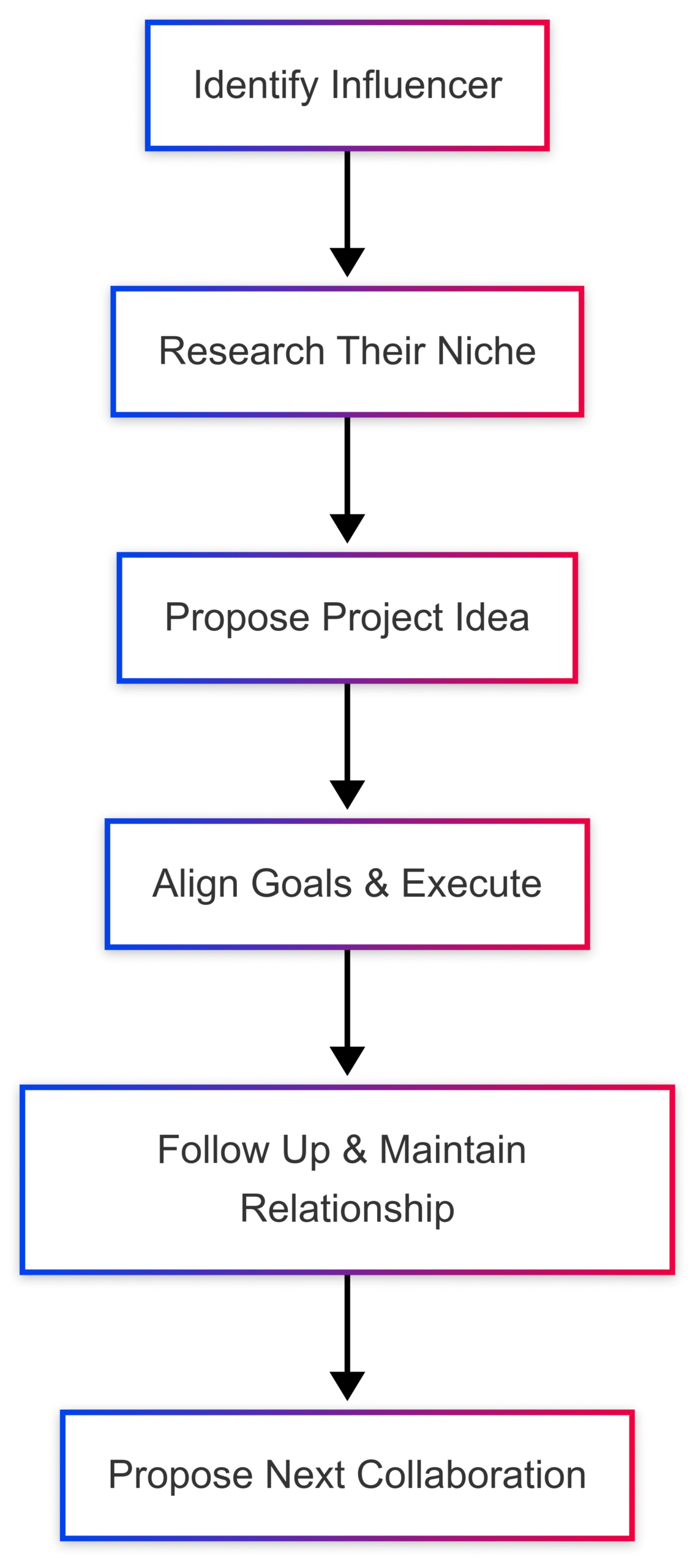
Conclusion: Building a Network That Nourishes Your Career
Connecting with food influencers on LinkedIn is about more than expanding your network—it’s about building relationships that drive growth, inspiration, and opportunity in the food and beverage industry. By polishing your profile, engaging thoughtfully, reaching out with purpose, joining active groups, and collaborating creatively, you can forge meaningful connections with influencers who share your passion.
Here’s a quick recap:
- Polish Your Profile: Create a compelling headline, summary, and portfolio that showcase your expertise and personality.
- Engage Thoughtfully: Comment, share, and post content that adds value and sparks conversation.
- Reach Out Directly: Send personalized messages that offer value and include a clear call-to-action.
- Join Food Groups: Participate in active groups to connect with professionals and share insights.
- Collaborate Creatively: Propose projects that align with mutual goals and nurture long-term partnerships.
Building these connections takes time, much like slow-cooking a perfect dish. Be strategic, authentic, and value-driven in your approach. As Jon Davids puts it, “Choosing the right influencer is 90% of success.” Focus on quality relationships, and your LinkedIn network will become a powerful ingredient in your food industry success.
Please share these 5 Ways to Connect with Food Influencers on LinkedIn with your friends and do a comment below about your feedback.
We will meet you on next article.
Until you can read, 10 SEO Tips for Blogs to Boost Your Rankings (+ Examples)
